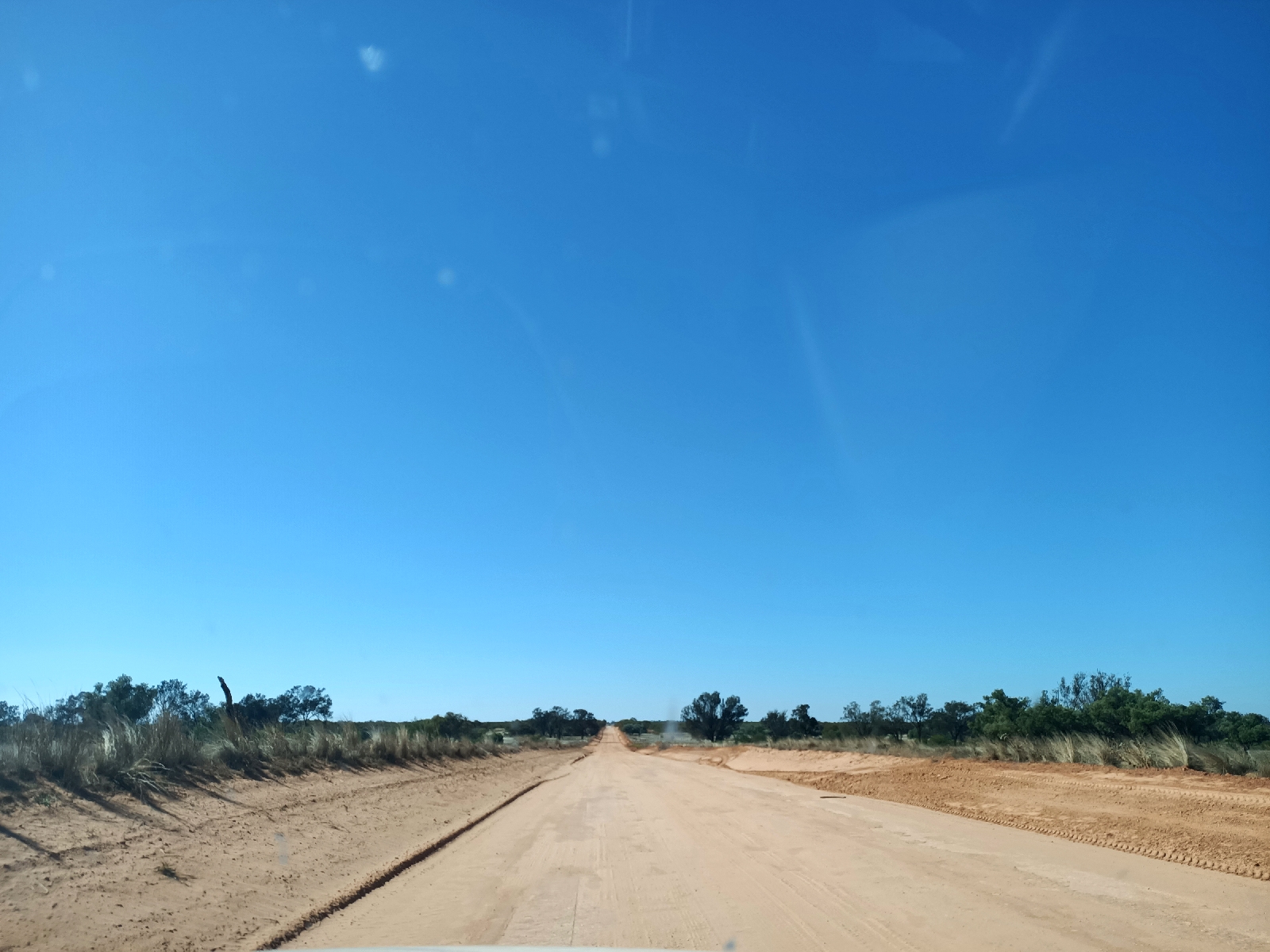Today we completed a 254 km round trip to the edge of Mungo National Park, with about 100 km of it on unsealed roads.
I can imagine that people will say, why travel so far and still not be able to go into the park, but when you have a dog then you undertake the part that is possible.
Information for people who do not live in Australia. Dogs are not allowed in National Parks here, although some states will allow dogs into the car parking areas. Not NSW. When you see how many signs there are in NSW that states that 1080 poisons are used in them, then you would not want your pet to be there anyway. 1080 poison is a nasty poison that has no antidote. It is used against foxes, rabbits and wild dogs (dingoes?). Australia has some pretty awful practices. But lets not delve into this one.
All in all it was a scenic drive, and we did drive the few metres to the Visitor Centre in the park, and had turns sitting with Piper in the car while the other person looked around the exhibits.
Mungo National Park and the World Heritage site which surrounds it was recognised in 1981 because of its geological past and its record of indigenous settlement dating back 40,000 years.
Mungo occupies much of an ancient lake bed, Lake Mungo, During the ice age there were a series of lakes which drained into the Darling River. There is no lake here now. To the east of the lake bed there are the remains of the sand dunes, called The Walls of China. The sand dunes are over 40 m in height and stretch in an arc for approximately 40 km. We could not visit them as they were too far into the park.
The remains of 'Mungo Woman' (26,000 years old) and 'Mungo Man' (28,000 - 30,000 years old) were found here. Both remains have now been returned to the ground.
The NSW government are rapidly sealing the road from Mildura to Mungo National Park, and have nearly completed half of the distance.
In the photograph below it is possible to see that they are nearly ready to seal the next section.
A few km from the park is Mungo Lodge, which is a private enterprise. There are luxury units here, meals and a camping ground which allows dogs. They also organise tours.
We were able to walk Piper around here, so she got a lovely break. Piper has plenty of room in the back seat of the car, and a comfy bed to lie on. She is also a very patient dog.
The Visitor Centre was excellent with plenty of information about the park with good visual geological and historical details.
At the back of the Visitor Centre there is an area called 'The Meeting Place' where Mungo's indigenous people gather as a community. I forgot to take a photograph of it, but it was beautifully landscaped.
A model of one of the animals that roamed this area thousands of years ago. It was a very large replica.
The old wool shed, built in 1869, and used when the area was agricultural land.The original water storage area, where the water ran from the roof of the shearing shed into the large hole in the ground. The days before corrugated tanks.
This part of the road was extremely corrugated! But our new SsangYong Rexton handled the rough roads beautifully. We were most impressed.
We thoroughly enjoyed the day out, and the clear skies and warm weather helped considerably. I think we will all sleep well tonight.









No comments:
Post a Comment